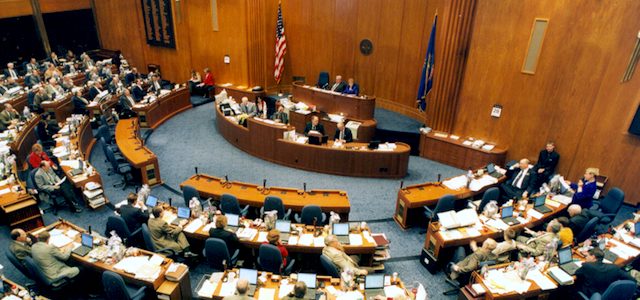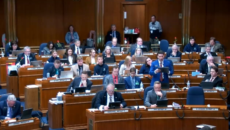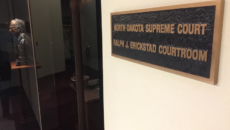Dorso Column: The North Dakota House Trends More Conservative Than The Senate

I spent some time this week analyzing the makeup of the standing committees for the coming legislative session. As bills are taken up by each committee we will have a better idea of the characteristics and tendencies of the individual members and their committees as a whole. That being said, I’ll attempt to give the reader a preview of what I think will happen in the Appropriations Committees of the House and Senate.
The House Appropriations Committee is actually made up of three sub divisions. They are the Human Resources Division chaired by Rep. Chet Pollert, the Government Operations Divsion chaired by Rep. Blair Thoreson, and the Education and Environment Division chaired by Rep. Robert Skarpohl.
Each of these subs will be assigned appropriations bills for hearings in their general area of study. They will make recommendations for amendments to the full committee chaired by Rep. Jeff Delzer.
I know all four of these men and believe them to be fiscally conservative. Generally Republican Majority Leader Al Carlson has assigned Appropriations committee membership to conservative members of his caucus, with some notable exceptions. As there are two Democrats on each division with seven members, and one on the division with six members, (Government Operations) for a total of five of the twenty-one members you can expect an agenda that reflects the four chairmen’s philosophical tendencies.
By House rules of procedure all bills that carry a fiscal note must have a hearing in Appropriations. There are bills that will get their original hearing in one of the other standing committees but will be re-refered to the Appropriation Committee.
As an example education bills heard in the Education Committee, such as those proposed by the Governor, will eventually find their way to Rep. Skarpohl’s Committee and then to the full Appropriation Committee.
I will be very interested in how the House Republican members vote down in committee on some of the more important issues to come before them. If the 16 Republican members of Appropriations stick together they only need 34 more Republican votes from their large majority to pass a bill.
The Senate is a totally different story.
Chaired by Senator Ray Holmberg and made up of nine Republicans and four Democrats for a total of 13, most of the committee’s members have more liberal tendencies then the House. In most cases the chairman assigns specific bills to a Republican committee member who after the hearings on the bill makes amendment recommendations to the full committee.
It will be interesting to see who Chairman Holmberg assigns the individual bills to. As an example how will Senator Ron Carlisle or Senator Kilzer deal with a retirement bill that the North Dakota Public Employees Retirement System has introduced? Senator Kilzer and Senator Carlisle represent legislative districts with large concentrations of state employees.
I have researched a number of significant appropriations bills over the last twenty years and found that the Senate has generally added more money by amendment than the House. That is not to say they have always been successful.
Approximately half of the appropriations bills will be assigned to the House the others to the Senate. This is usually based on a two year rotation. As an example if higher education appropriations were first heard in the House last session they will start in the Senate this time.
By joint rule, all bills which have passed a chamber must be messaged to the other chamber by the cross over dead line. Thus the voters are assured that there will be hearings in both chambers on appropriations bills.
If you don’t like what one chamber is doing to a bill you get a second chance to effect the outcome when it has hearings in the other. I’ll be keeping a close eye on some bills to see how the individual members and the committees vote not only on the bill but the proposed amendments recommended out of committee.
Any bill that is amended by the last chamber to pass it could end up in a conference committee for further amendment. At the very least it has to be voted on again in its amended version by the first chamber to pass it. If amended by a conference committee it has to pass both chambers again.
It won’t take long to see if my perceptions of the tendencies of the House and Senate Appropriations are accurate. By the end of January we’ll have a good idea of who wants to spend the taxpayer’s money or who wants to limit the size of state government.
Sue and I wish all of you a Happy and Prosperous New Year.







